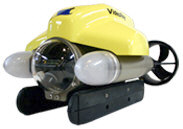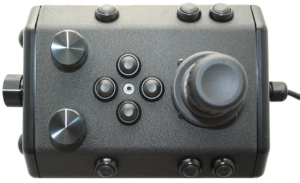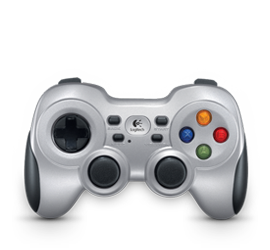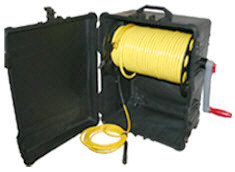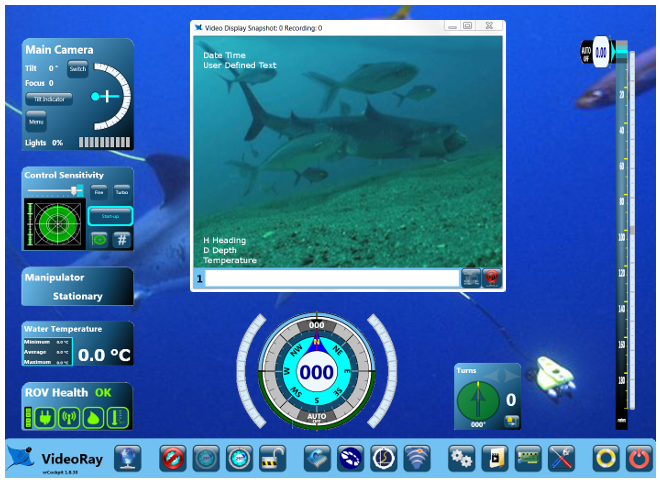Accessory Integration OverviewThe Pro 4 architecture supports several methods for mounting and using accessories, and the accessories can be divided into categories based on whether they are used on the topside or the ROV and their requirements for power and/or communications. VideoRay tether includes an APIC (Auxiliary Pair of Independent Conductors) that can be used to communicate with accessories. The Pro 4 ROV has a 9 pin accessory port that includes access to the APIC as well as to power, and the ROV communications and video buses. The Control panel likewise has an AUX port for topside access to the APIC.
Most accessories that require communications with the topside, rely on the APIC. The signal travels from the accessory, through the ROV's accessory port to the tether and then to the AUX port on the control panel. There is usually a topside interface that connects to the AUX port and converts the raw signal from the APIC (typically RS-485 or Ethernet over twisted pair using DSL modems) to RS-232 or USB so that it can be interfaced to the topside computer for processing. In the Pro 4, several popular accessories can have their interface built into the control panel. These include BlueView and Tritech as well as any device that uses RS-485. In these cases, there is an additional switch on the control panel that can direct the APIC directly to the AUX port (for raw output), or through the built-in interface. The built-in interface is connected to the computer through either an Ethernet or USB connection (depending upon the type of interface). If the device uses USB, the standard USB connection between the control panel and the computer can be used so another USB connection or cable is not required. Even with systems that contain built-in interfaces, the AUX port allows any device to be connected, including Pro 3 versions of accessories. This maintains forward compatibility of existing accessories and backwards compatibility of the Pro 4. In addition to using the APIC for accessories, the Pro 4 can communicate with low bandwidth devices over the ROV's RS-485 communications bus. This allows multiple accessories that require communications with the topside to be used simultaneously, and tighter integration of the software. For example, the Videoray radiation sensor used to require the APIC and a separate software program. With the Pro 4, the radiation sensor can use the ROV's communications bus and a VideoRay Cockpit instrument to display the data. This means that the Pro 4 can carry the radiation sensor and another accessory, such as sonar, simultaneously, and the radiation sensors data can be overlaid on the video or trigger events, such as alarms, in VideoRay Cockpit. Topside AccessoriesTopside accessories include those that support operations and logistics and those that integrate with the control panel
ROV Mounted AccessoriesROV mounted accessories include intervention tools like the manipulator and cutter and additional sensors like sonar and water quality sensors. Examples of the types of integration and a few sample devices are listed below:
The Smart Tether is a unique example of integration. It is currently the only device that uses power directly from the Tether. It also uses the ROV communications bus for transmitting data. Accessory Equipment SupportMost submerged accessories are mounted to the ROV on the existing VideoRay Pro 4 skid, or they may have their own skid designed to replace the standard skid. The electrical and data requirements of submerged accessories are supported via an accessory port on ROV that includes power and an interface to the APIC (Auxiliary Pair of Independent Conductors). The tether includes an APIC for dedicated communications to the topside, where the conductors can be accessed at the AUX connector on the control panel. The ROV communications bus is also exposed on the accessory port of the ROV allowing a direct interface between VideoRay Cockpit software and the accessory. |
|
Additional Notes
|
Pro 4 Operator's Manual
Equipment Guide > Accessories > Integration Overview






